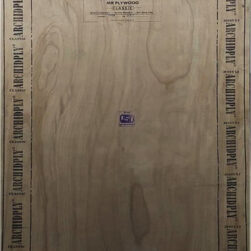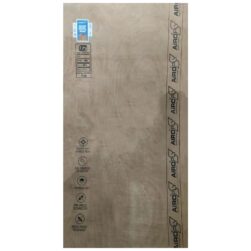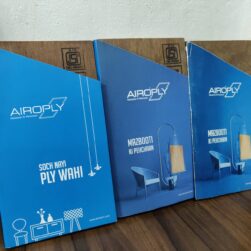Blockboard FAQs
-
What is blockboard?
What is blockboard?
Blockboard is a type of engineered wood product made by sandwiching a core of softwood strips between two layers of wood veneers. It is lighter, stable, and less prone to warping than solid wood, making it a popular choice for various applications such as furniture, cabinetry, and panelling.
-
Is blockboard environmentally friendly?
Is blockboard environmentally friendly?
Blockboard made from sustainably sourced wood and manufactured using eco-friendly processes can be considered environmentally friendly. Look for certifications like FSC (Forest Stewardship Council) to ensure the wood used in blockboard production comes from responsibly managed forests.
-
Can blockboard be recycled?
Can blockboard be recycled?
Yes, blockboard can be recycled. It can be processed and used as a raw material for various wood-based products or energy production. Proper recycling facilities and processes should be employed to ensure environmental sustainability.
-
What are the advantages of using blockboard?
What are the advantages of using blockboard?
Some advantages of using blockboard include its strength, stability, resistance to warping, and versatility. It provides a solid and durable surface for various applications such as furniture making, interior decoration, and construction.
-
Is blockboard suitable for making doors?
Is blockboard suitable for making doors?
Yes, blockboard is suitable for making doors. Its structural stability and resistance to warping make it an excellent choice for door construction. Blockboard doors are strong, durable, and can withstand the rigors of everyday use.
-
Can blockboard be stained or varnished?
Can blockboard be stained or varnished?
Yes, blockboard can be stained or varnished to enhance its appearance and protect the surface. Before staining or varnishing, it's essential to prepare the surface properly by sanding and cleaning to ensure a smooth and even finish.
-
Is blockboard resistant to termite attacks?
Is blockboard resistant to termite attacks?
Blockboard can be made resistant to termite attacks by using termite-resistant wood species or applying chemical treatments. Properly treated blockboard is highly resistant to termite infestation, ensuring the longevity of furniture and structures made from it.
-
What are the different grades of blockboard?
What are the different grades of blockboard?
Blockboard is graded based on factors such as wood quality, core material, and surface finish. Common grades include MR (Moisture Resistant) grade, BWR (Boiling Water Resistant) grade, and BWP (Boiling Water Proof) grade. Higher grades offer better resistance to moisture and durability.
-
How should blockboard be stored?
How should blockboard be stored?
Blockboard should be stored in a dry and well-ventilated area to prevent moisture absorption and warping. It should be kept flat and supported evenly to avoid bending or sagging. Storing blockboard away from direct sunlight and extreme temperature fluctuations is also recommended.
-
Can blockboard be used for flooring?
Can blockboard be used for flooring?
Blockboard can be used for flooring in certain situations, but it's not as common as other materials like plywood or hardwood. It can be suitable for flooring in low-traffic areas or as a subfloor for other types of flooring. Proper sealing and finishing are essential to protect blockboard flooring from moisture and wear.
-
What is the lifespan of blockboard?
What is the lifespan of blockboard?
The lifespan of blockboard depends on various factors such as quality, usage conditions, and maintenance. Properly manufactured and maintained blockboard can last for many years, even decades, providing durable and reliable performance for furniture, construction, and other applications.
-
Can blockboard be used for exterior siding?
Can blockboard be used for exterior siding?
Blockboard is not typically used for exterior siding due to its susceptibility to moisture damage over time. Materials like fiber cement, vinyl, or engineered wood siding are more commonly used for exterior applications as they offer better weather resistance and durability.
-
What are the standard dimensions of blockboard?
What are the standard dimensions of blockboard?
Blockboard is available in various standard dimensions, with common thicknesses ranging from 12mm to 25mm. The standard width is usually 1220mm (4 feet), and the length can vary depending on the manufacturer and specific requirements of the project.
-
How can I ensure the quality of blockboard?
How can I ensure the quality of blockboard?
To ensure the quality of blockboard, look for reputable manufacturers and suppliers who adhere to industry standards and certifications. Check for certifications such as IS (Indian Standards), ISI (Indian Standards Institute), or equivalent quality assurance certifications in your region. Additionally, inspect the blockboard for uniformity, smoothness, and absence of defects before making a purchase.





